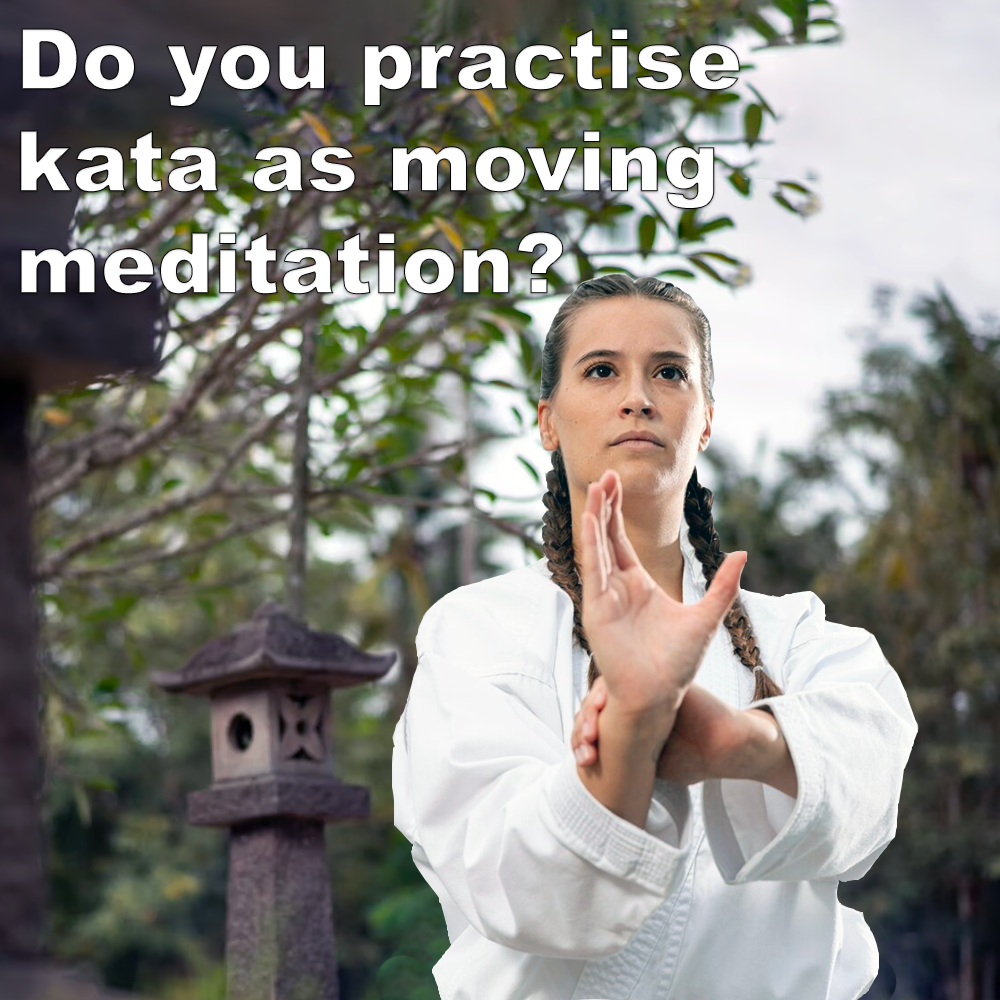
Do you practise kata as moving meditation?
Posted by ADAM CARTER on APR 10, 2023

Do you practise kata as moving meditation?
A person who is interested in karate for artistic or aesthetic reasons, is unlikely to find themselves caring to much about the “real-world” self-defense applications found in kata. Modern karate competition practitioners are also unlikely to care about these applications because it has little relevance to competitive ‘kumite’.
Much of what is referred to as ‘bunkai’ today, really is just highly choreographed karate-ka vs karate-ka demonstrations, which often start with impractical blocking techniques.
Karate and its kata has undergone many modifications over the years to comply with non-combative considerations such as competition, athleticism, “style purity”, aesthetics and more.
Fighting, martial arts and self-protection require differing skill sets away from the all encompassing blocking, punching, and kicking seen in the majority of dojo today.
There are many different reasons to practice karate, whether an individual practitioner should care about the real-world self-defense applications or not is dependent on what they are training for. And this is the crux of the matter. There should be a distinction made in your training for each scenario you choose. Then as long as everyone understands those differences, great..… But be honest, and call it what it is.
Traditionally, kata were created to record the fighting methods or principles of a given individual, created for civilian self-defense. Based on the writings and teachings of the past masters, and the teachings and knowledge of some of todays masters, combined with my own reasoning, this is what karate and its kata is to me.
Of course it can be other things too. However, first and foremost, kata is a record of combative principles. To effectively make use of those combative principles we need to move beyond the solo form to practice those principles and techniques with a partner (in a realistic fashion). After all, traditionally (or historically) the two-man partner drills came first. It was not a meditative practice in anyway, it did not “develop from Buddhism or Confucianism” (Itosu 1908).
The practice of the solo form will allow you to refine body-control, visualization and mental attitude without the pressure induced by an opponent. However, the solo representation is a tool, a mnemonic, it is an aid to remembering the two-man drills when alone.
Kata were not originally created to be some kind of meditative practice or “body feeling and spirit” connection. Of course, it can be, if that is want you want from your kata..… Again context.
But for the practitioners who believe that karate should work in self-protection situations, the study of kata and its applications are extremely valuable. The applications need to be valid (context) for real situations. This is what kata were created for.
Not all practitioners are interested in the real-world practical side of the martial arts. Some practice the art for other reasons.
However for me, bunkai study has to be plausible and effective, working to the same information as the past masters (habitual acts of civilian violence).
In conclusion, one of the things that really attracts me to karate, is its whole life practice. It’s not something I have to give up as my body ages. The way I practice will change, and it has, and karate allows for that. It can be hard, severe and highly combative … but we can’t keep that up forever. As we age, we can continue to practice in a more age appropriate way, and still benefit from doing so.
An important aspect of traditional karate and Okinawan karate in particular, is its emphasis on natural movement, which also can have a therapeutic effect and helps people live healthy, active, and long lives. On occasion, when practicing alone, the solo performance leads me to a meditative state, literally feeling, internalizing the connections and the movements.
But context is everything. The first and most significant question to ask is why are you practicing - since the analysis must fit the motivation. It’s up to you which way you perceive your karate to be, but if you have no understanding that a context exists, it really is just pot luck.
![]() Photo Credit: Freepik
Photo Credit: Freepik
